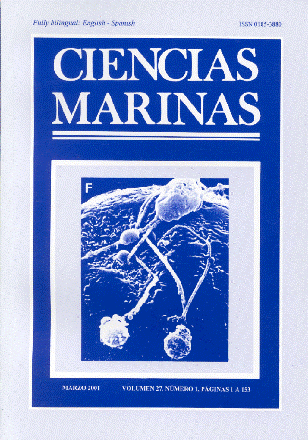Dynamic catch-effort model for brown shrimp Farfantepenaeus californiensis (holmes) from the Gulf of california, Mexico
Main Article Content
Abstract
We analyzed the catch and effort data for the brown shrimp (Farfantepenaeus californiensis) fishery over 22 years. We used a biomass dynamic model in a stochastic version to analyze the catch-per-unit effort of the trawl fishery in the Gulf of California, Mexico. Two hypotheses were proposed: the first (observation error) assumes that the catch-per-unit effort (CPUE) is measured with error, while in the second (process error), the variability of the population is produced by factors not included in the model. The results show that the hypothesis of the process error was accepted. In this case, the hypothesis of the process error recognizes several sources of perturbation in the model. For example, changes in the size structure of the shrimp population, changes in the natural mortality, variations in the fecundity or recruitment, and changes in the environment. Evidence of the relation between the environment and the shrimp population is discussed, as is the possibility of proposing a biological hypothesis for the trends of the population and the CPUE.
Downloads
Article Details
This is an open access article distributed under a Creative Commons Attribution 4.0 License, which allows you to share and adapt the work, as long as you give appropriate credit to the original author(s) and the source, provide a link to the Creative Commons license, and indicate if changes were made. Figures, tables and other elements in the article are included in the article’s CC BY 4.0 license, unless otherwise indicated. The journal title is protected by copyrights and not subject to this license. Full license deed can be viewed here.

